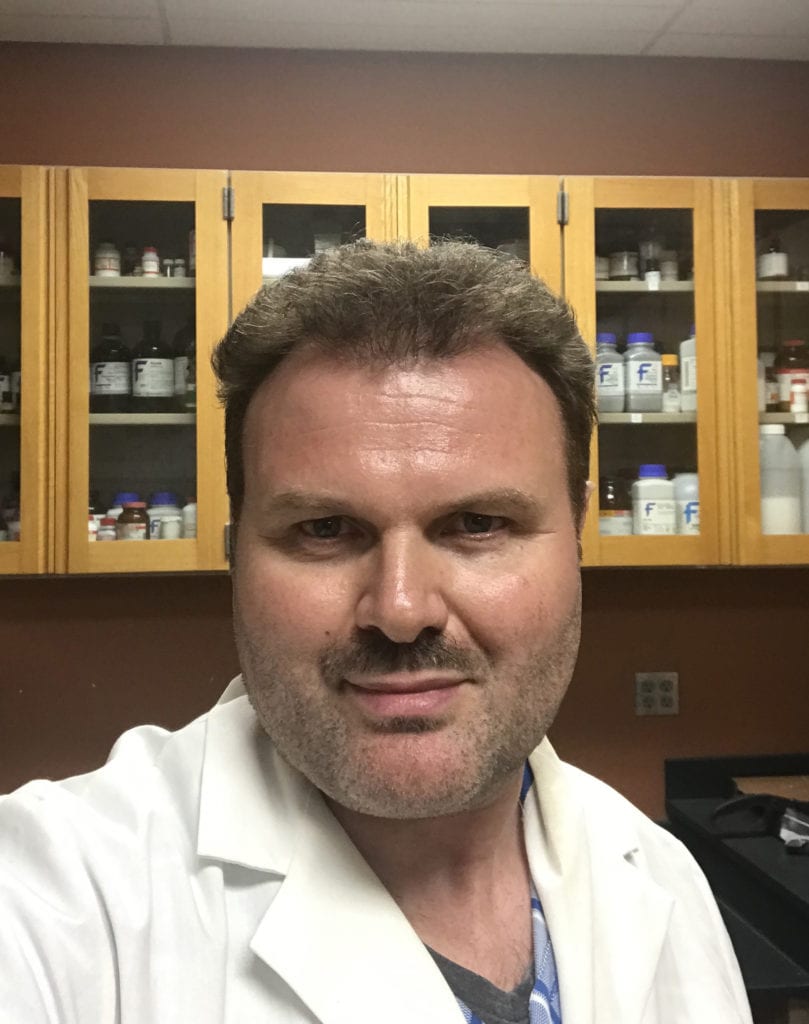

Dr. Hayes’ PhD student, Anton Astner, was invited by Dr. Hanna Landenmark, who is an associate editor for the PLOS One journal, to contribute to the PLOS EveryOne Blog dedicated to plastics in the environment. Anton was approached because of his contribution to PLOS One “Effects of soil particles and convective transport on dispersion and aggregation of nanoplastics via small-angle neutron scattering (SANS) and ultra SANS (USANS)”, which was part of a Special Issue entitled “Plastics in the environment.”
In addition to the very interesting piece, Anton is providing his opinion as to what are the barriers for everyday use of plastics that are less persistent in the environment. Increased awareness of environmental sustainability for plastic materials associated with strict environmental regulations incentivized the development of novel biodegradable materials to replace petroleum-derived plastics. Promising alternatives to petrochemical plastics on similar physiochemical properties in this context are polyhydroxyalkanoates (PHAs), microbiologically engineered polyesters with outstanding biodegradability and biocompatibility characteristics. Therefore, PHAs cover various applications such as, biomedical, agricultural, biofuels, and building blocks for various chemicals (Amelia et al., 2019).
However, a low production yield and material heterogeneity are the challenges for manufacturers. Downstream processing accounts for around 30% of the production costs (Perez-Rivero et al., 2019). Even when PHA is a promising candidate for polyethylene substitution in agriculture, the production cost is 2–3 times more expensive than petrochemical plastics (Yu et al., 2006). In addition to the high price, low thermal stability and the very narrow thermal processing window are challenging. Therefore, the utilization of cheaper substrates derived from waste streams such as food processes or pulp and paper is crucial for the commercialization of PHA production. In particular, integrating the PHA production into the existing industrial production processes seems promising. In this context, bioaugmentation allows manufacturing a more uniform product stream using existing microbial populations and promoting enhanced activities (Khatami et al., 2020).
In agriculture, PHAs are currently employed at an experimental stage as a promising candidate as a feedstock for biodegradable plastic mulches (BDMs) (Hayes et al., 2019). The initially higher implementation costs of BDMs compared to conventional plastic mulches (such as polyethylene) compensates for the costs associated with manual field removal and recycling since BDMs can be tilled into the soil after the growing season (Velandia et al., 2019).
A significant implementation barrier for agricultural BDMs used in organic food production is that all components must conform to the Natural Organic Program (NOP) standard. The NOP standard describes that plastic mulch products must be entirely composed of constituents derived from natural resources and cannot contain synthetics such as petroleum-derived ingredients or additives. However, most BDMs contain fossil-derived components (synthetics), thus preventing U.S. organic agriculture certification (Hayes et al., 2012). According to NOP standards, an additional limitation to PHA utilization for organic farming is that plastic can only be produced without genetically modified microorganisms. Current research focuses on a more homogenous biopolymer composition and increased production yields by utilizing improved extraction methods and bioaugmentation from a manufacturing standpoint (Khatami et al., 2020).
In my opinion, the development of consistent testing and certification standards through research is essential to emphasize the potential environmental benefits of conventional plastics. Furthermore, fundamental research contributes to accurate information on physicochemical properties, appropriate use, disposal and limitations, impact to the environment, and final breakdown through biodegradation of the material relevant to user groups.
References
Amelia, T. S. M., Govindasamy, S., Tamothran, A. M., Vigneswari, S., & Bhubalan, K. (2019). Applications of PHA in Agriculture 13. Biotechnological Applications of Polyhydroxyalkanoates, 347. doi:https://doi.org/10.1007/978-981-13-3759-8_13
Hayes, D. G., Anunciado, M. B., DeBruyn, J. M., Bandopadhyay, S., Schaeffer, S., English, M., Ghimire, S., Miles, C., Flury, M., & Sintim, H. Y. (2019). Biodegradable plastic mulch films for sustainable specialty crop production. In Polymers for Agri-food applications (pp. 183-213): Springer.
Hayes, D. G., Dharmalingam, S., Wadsworth, L. C., Leonas, K. K., Miles, C., & Inglis, D. A. (2012). Biodegradable agricultural mulches derived from biopolymers. Degradable Polymers and Materials: Principles and Practice (2nd Edition), 201-223. doi:https://doi.org/10.1021/bk-2012-1114.ch013
Khatami, K., Perez-Zabaleta, M., Owusu-Agyeman, I., & Cetecioglu, Z. (2020). Waste to bioplastics: How close are we to sustainable polyhydroxyalkanoates production? Waste Management, 119, 374-388. doi:https://doi.org/10.1016/j.wasman.2020.10.008
Perez-Rivero, C., López-Gómez, J. P., & Roy, I. (2019). A sustainable approach for the downstream processing of bacterial polyhydroxyalkanoates: State-of-the-art and latest developments. Biochemical Engineering Journal, 150, 107283. doi:https://doi.org/10.1016/j.bej.2019.107283
Velandia, M., Smith, A., Wszelaki, A., & Galinato, S. (2019). The economic feasibility of adopting plastic biodegradable mulches in pumpkin production. Retrieved from Agronomy 2020: https://www.mdpi.com/2073-4395/10/1/51/htm
Yu, J., & Chen, L. X. (2006). Cost‐effective recovery and purification of polyhydroxyalkanoates by selective dissolution of cell mass. Biotechnology progress, 22(2), 547-553. doi:https://doi.org/10.1021/bp050362g